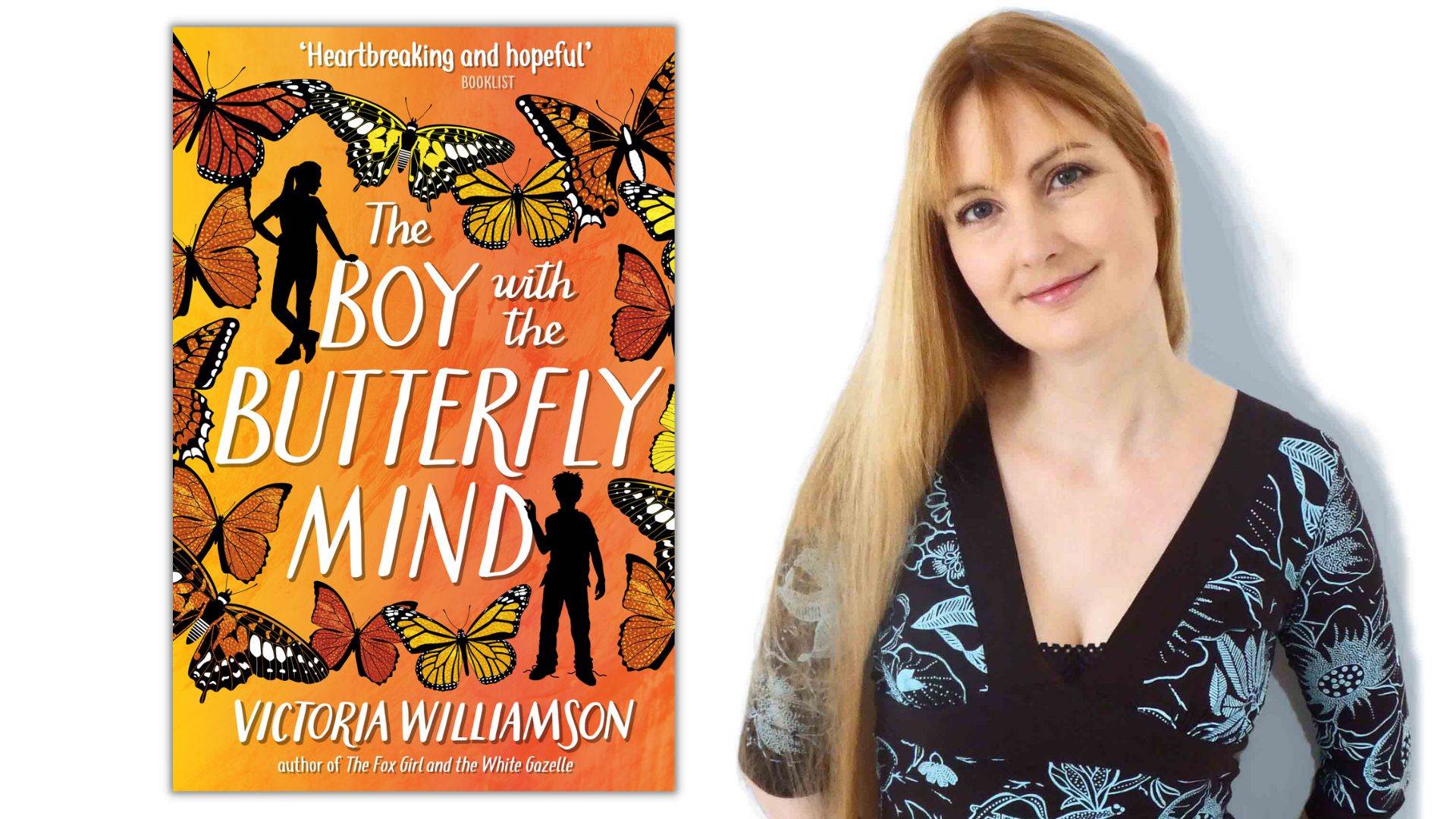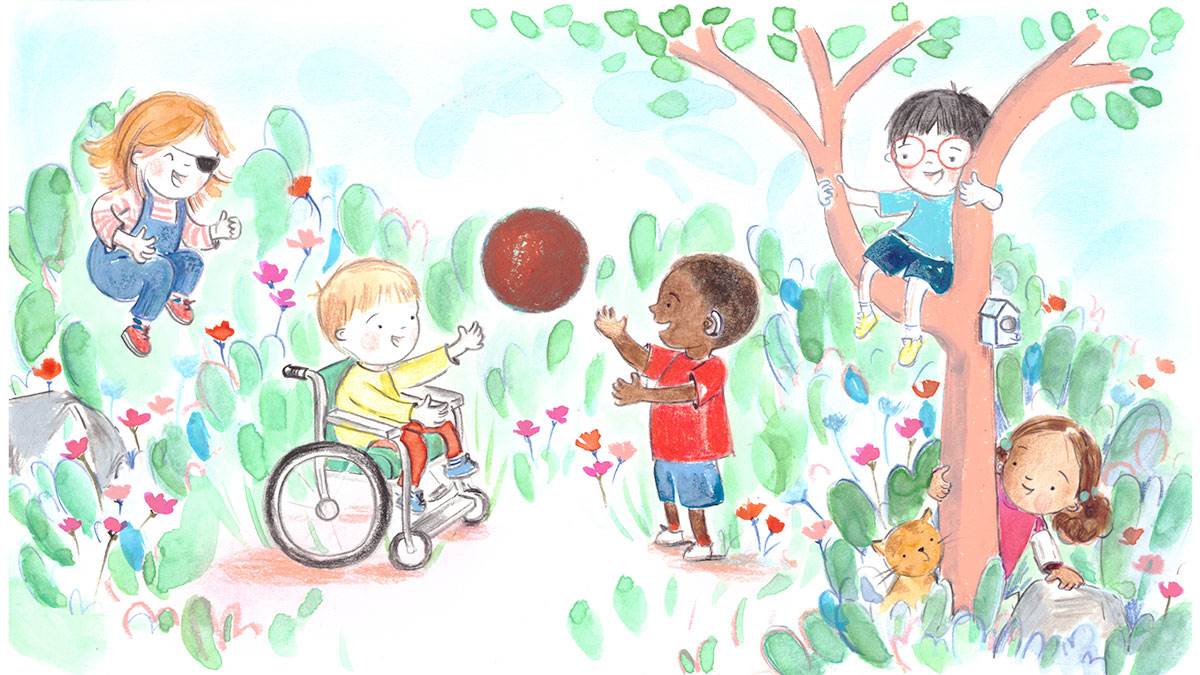Why schools need inclusive books
Published on: 15 February 2023
Author Victoria Williamson explains why including books about lots of different experiences is crucial in a school.

Fear of the unknown
Like many children who went to primary school in the 1980s, my experiences of disabled people at the time was very limited. Back then, children with additional support needs mostly went to separate schools, and there were very few opportunities for discussing various types of disability or getting to know a child with a disability unless they happened to be related to you or were a neighbour. Unfortunately, this lack of familiarity could lead to misunderstandings, or worse, a fear of the unknown.
That’s what I discovered when a boy with cerebral palsy joined a local church social club for the summer when I was eight. I’m ashamed to admit now that I was a little nervous around him. I was worried about coming across as rude because I didn’t understand what he was saying, and so I didn’t spend enough time with him to get comfortable with his speech patterns. I was worried that he’d hurt himself during running games when he fell using his walking frame, and so I didn’t pick him for my teams. I was worried he would choke at snack time as he found swallowing difficult, and so I sat at the other end of the table. My interactions with him weren’t about him – they were self-absorbed reflections about how he made me feel.
I didn’t see him as someone who was like me – in fact, I saw him as someone completely different.
Years later when I started university, I read an article about him in the local newspaper. It was about his academic achievements, and about his experiences studying at university. It was definitely a lightbulb moment for me. Not only did I realise that the boy I’d previously thought was so unlike me was actually doing similar things with his life, he also turned out to be smarter and more talented than me too.
I didn’t forget that lesson. Later, as a primary school teacher specialising in working with children with additional support needs, I reminded myself and the children regularly about the importance of not pre-judging, and of getting to know people on the inside and not just the outside.
How books help us empathise with each other
On my teaching journey, I discovered that one of the best ways to help children to empathise with each other is through children’s books. There are two big advantages to this approach to learning about additional support needs. The first is that it opens up a dialogue about disability without putting a particular child on the spot and making the conversation specifically about them.
Not all children like being the centre of attention or answering lots of questions about themselves, so children’s books are a great way to help those children be ‘seen’ without forcing them into the limelight.
The second advantage is that by reading a range of children’s books where disabled children are the heroes of the adventures, it helps children to see the potential in everyone, as well as helping them see how much they have in common with others who initially seem different.
 Illustration: Fiona Lumbers
Illustration: Fiona Lumbers
Looking back, I can see that many of my early preconceptions about the boy with cerebral palsy in the social club could have been overcome right at the start of the summer by adults discussing disabilities with us in an open and empathetic way. If we’d had the chance to ask questions to dispel our misconceptions and to overcome our misunderstandings, that summer club could have been a positive learning experience for all of the children, and a much more welcoming place for the boy who often got left out as a result of the other children’s lack of understanding. But back then, many adults didn’t really understand much about disability either, or how to help all children feel integrated into the group.
Inclusion and integration
Fast forward thirty-five years, and we’ve come a long way. Schools are now much more inclusive places, and children regularly come into contact with others who have different ways of seeing and interacting with the world. But ‘inclusion’ is not the same as ‘integration’, and without help from adults, children can still be in the same room together without necessarily understanding the experiences of others. This is where children’s books have an important role to play in bridging that understanding gap.
Reading stories narrated by a wide range of different characters can help children to experience life in different ways, and to see the similarities as well as the differences in others.
For example, in my middle grade book, The Boy with the Butterfly Mind, the main character, Jamie, is initially badly understood by his step-sister, Elin. Elin is neat and orderly, and can’t understand why Jamie ‘can’t just do as he’s told’ by teachers and parents, and why he’s always so messy and forgetful. By hearing about Jamie’s ADHD and struggles to ‘fit in’ with his new family in his own words, children without ADHD have the chance to understand what this might be like, while children with ADHD have the chance to be ‘seen’ through the character of Jamie. In my teen book, War of the Wind, the main character, Max, loses his hearing in a boating accident, and initially struggles to fit in with the additional support needs class, as these are children whom he and his former school friends used to make fun of. His own ‘lightbulb moment’ in the story mirrors my own, when he realises the boy in his class with cerebral palsy is actually the one who has the talent and ability to help them solve the scientific riddle of the secret government experiment that threatens their island.
BookTrust has a wide range of suggestions for books which show positive depictions of characters with additional support needs. Why not read some of these with your class, and help get the conversation on empathy and understanding started?
Topics: Bookmark, Disability, Inclusive, Features
Explore more inclusive books
Introduce different experiences to your school's bookshelves with our recommendations for inclusive books for children.
Books with positive images of disability: See the best of the year
Here are the children's books in 2022 that BookTrust think show positive images of disability, as well as titles that may prove useful in discussing disability and inclusive issues with young readers.
Casual inclusion of disabled characters
This list comprises books which include disabled characters within their images and/or story naturally, subtly and often without comment.
Autism
We believe that books are a great way to raise awareness and improve understanding of different experiences. This booklist aims to provide a range of children's and teens' books that feature characters who are autistic, or who have Autistic Spectrum Conditions.








